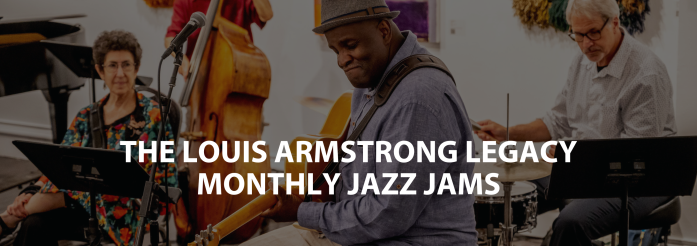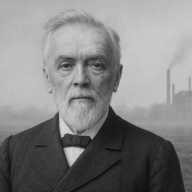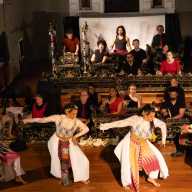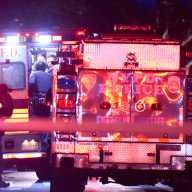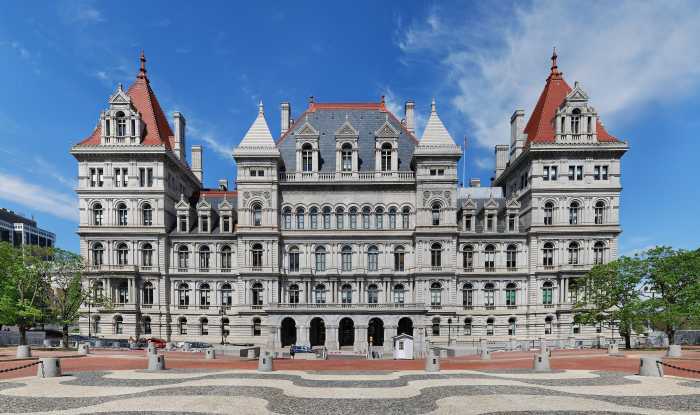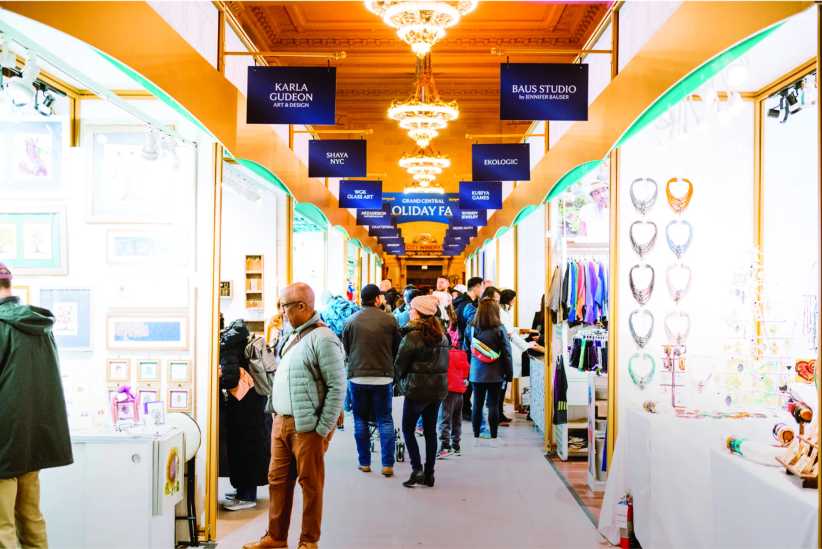"Art is the golden path to healing," said Dr. Janos Marton, director of the Living Museum at the Creedmoor Psychiatric Center in Queens Village. Dr. Marton who founded the museum in 1984 with his friend, the late Polish artist, Bolek Greczynski sees this philosophy as a guiding principle in the therapeutic work done by his artist/patients.
In the months following September 11, Dr. Martons patients found they were sharing this path with all New Yorkers, looking for ways to express their own feelings of shock and loss following the attacks.
"They were all, in their own idiosyncratic ways and through their art, showing the effects [of 9/11]," said Dr. Marton.
One artist, John Tursi, did a series centered on the Statue of Liberty. Tursi painted "United We Stand" shortly after the attacks, which he says expresses the sorrow and the sadness of September 11. "Of course the Statue Of Liberty is crying. She lost the Twin Towers," he said.
Recently, Tursi also started a series of abstract American flags. "I really love America and the flag," he said. "I have done many flags in many mediums and I am continuing with the project."
James Correa, a 27-year-old artist who normally paints nature subjects, saw no changes in his usual themes after the attacks. What got his and Dr. Martons attention was something he had painted two months before September 11: a picture showing the towers and a lone airplane above them.
The work, which seems to be a foreshadowing of the disaster to come, shows the towers alone on an island, separate from the rest of the Manhattan skyline.
"In the painting I am in the plane," said Correa. "The towers are on an island; they are a symbol of New York." What makes the picture less prophetic is the direction in which the plane is headed.
"It was weird," he said. "In the picture, the sky is a blue and white blend. The sun is in the center, and boats are in the water nearby. But the plane is flying away from the towers."
Discussion of the work brought its real meaning to light.
At the time he painted it, the artist was trying to resolve two inner conflicts: a fear of flying and anxiety over leaving his home. A life-long resident of New York, Correa was planning to leave the city and start a life somewhere far away.
Since then he has decided, for personal reasons, to remain in Queens.
A friend often takes him on fishing trips and into the mountains, so inspiration for Correas paintings normally comes from nature. It is the process of creating, more than anything shown in his work, that aids healing process.
"Painting is my therapy," he said. "It relieves depression. The bad thoughts go away when I paint."
Aside from relieving depression and other symptoms related to psychiatric disorder, the Living Museum has a greater overall mission.
Marton and Greczynski designed it as a place where patients can build friendships in an artists community and create a new self image. Instead of thinking of themselves as "crazy" they come to see themselves as artists with diagnosed psychiatric conditions.
The approximately 80 members of Creedmoors artistic community are free to create without being evaluated and scrutinized by the outside world. In this stress-free environment, patients redefine themselves.
Built in the 1920s by the State of New York, Creedmoor was an 80-building campus. It housed 7,000 residents by the 1950s. The discovery of new psychiatric medications and a push to deinstitutionalize patients by the state led to a gradual reduction of Creedmoors population. Less than 500 in- and out-patients are served by the facility today.
In 1983, Marton and Greczynski took over Building 75, formerly a kitchen and cafeteria, and converted it into the 40,000-square-foot museum. The buildings many rooms have become exhibition galleries for the facilitys artists who paint, sculpt, photograph, and work in a variety of media.
The museums success in the treatment of patients through art gained notoriety in 1998 when Academy Award-winning documentary director Jessica Yu released "The Living Museum," an 81-minute documentary film.
JohnTursi is one featured artist.
Harbor View House, a non-profit residential mental health facility in San Pedro, California, has created its own Living Museum, modeled after the Queens original.
Harbor Views artistic, therapeutic mission is similar to Creedmoors: to "enhance the creative expression of the mentally ill by providing a therapeutically enhanced system of studios and an opportunity to work professionally in painting, ceramics, photography, sculpture, drawing and mixed media."




